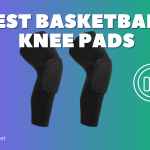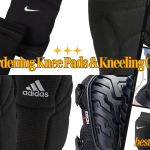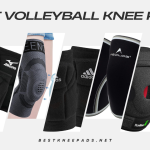Football players are known for their impressive athleticism and focus on safety on the field. However, in recent years, it has become increasingly common for players to forgo one piece of traditional protective gear: knee pads. This decision may seem surprising, given the potential for knee injuries in the sport. So, why did football players stop wearing knee pads?
There are several factors at play. Some players prioritize comfort and mobility on the field, opting for lighter gear that allows for greater agility. Others may be influenced by changes in rules and regulations, as well as advances in protective technology. Personal preference and fashion trends also play a role in this decision.
In this article, we will explore the reasons behind the shift away from knee pads, including the impact on player safety and game strategy. By understanding the factors that have influenced this decision, we can gain insight into the changing nature of football and the ongoing effort to balance performance and protection.
Key Takeaways:
- Football players have stopped wearing knee pads for a variety of reasons, including comfort, mobility, and fashion trends.
- Advances in protective technology and changes in rules and regulations may also be factors in this decision.
- The absence of knee pads can have implications for both player safety and game strategy.
- Understanding the reasons behind this change helps shed light on the evolving nature of the sport.
- Football remains a sport focused on safety, with an ongoing effort to balance protection and performance.
The Evolution of Football Equipment
Football equipment has come a long way since the sport’s inception. From leather helmets and minimal padding to advanced helmets and high-tech protective gear, the evolution of football equipment has been crucial in ensuring player safety while also improving performance.
The first recorded instance of football protective gear was in 1896 when Lafayette College football player George “Rose” Barclay wore an ear-flap helmet to protect his ears from being grabbed by opponents. This led to the development of padded helmets, which eventually evolved into plastic helmets with face masks in the 1950s.
Padding began to appear in football uniforms in the 1930s, initially with little protection for the player’s thighs and hips. By the 1960s, players were wearing thigh, hip, and tailbone pads, as well as rib protectors and shoulder pads that extended down the upper arm to the elbow.
The introduction of knee pads in the 1970s provided another layer of protection for players. Initially, knee pads were bulky and uncomfortable, but advancements in technology made them more streamlined and comfortable to wear by the 1980s.
Today, football equipment has continued to evolve with the development of advanced padding and protective gear, including helmets that can detect impacts and monitor players’ health. The emphasis on player safety has also led to stricter rules and regulations, including those governing helmet-to-helmet contact and targeting.
“The evolution of football equipment has been crucial in ensuring player safety while also improving performance.”
As football equipment has evolved, so too have players’ choices regarding what gear to wear. The decision of football players to stop wearing knee pads is just one example of how player preferences and needs continue to shape the sport’s equipment and safety standards.
In the following sections, we will explore the reasons behind football players’ decision to stop wearing knee pads and the impact it has had on the game.
Comfort and Mobility: Why Football Players Are Saying No to Knee Pads
When it comes to football equipment, comfort and mobility are key factors for players. The game requires fast movements, sudden stops, and swift changes in direction, all of which demand a high level of agility and flexibility. As a result, many players have opted to stop wearing knee pads, despite their protective benefits.
The discomfort caused by knee pads can be a significant factor in players deciding to forego this piece of protective gear. Traditional knee pads are known to be bulky and restrictive, and can impede a player’s ability to move freely. This can be a major issue in a sport where even the slightest hesitation or delay can make all the difference in a play.
Additionally, players must consider the added weight of knee pads, which can also impact their mobility. In a game where every ounce of weight can make a difference, even a small amount of added weight can impede a player’s speed and agility.
More modern protective gear has been developed with comfort and mobility in mind, allowing players to have the protection they need without compromising their ability to move freely. However, knee pads may still be seen as too bulky and restrictive, leading some players to opt for alternative forms of protective gear.
Ultimately, the decision to wear knee pads comes down to personal preference and the tradeoff between protection and mobility. While knee pads may offer some level of protection, players must weigh that against the potential impact on their performance on the field.
Rule Changes and Player Safety
In recent years, the NFL and other football leagues have implemented several rule changes aimed at improving player safety. These changes have included restrictions on tackling techniques, increased penalties for helmet-to-helmet contact, and stricter enforcement of unnecessary roughness.
While these rule changes have been well-received by many players and fans, they may have also contributed to football players discontinuing the use of knee pads. As players adapt to the new regulations, they may prioritize mobility and agility over traditional protective gear.
“The game is changing, and players have to adapt,” says former NFL linebacker Brian Orakpo. “You can’t be clunky out there on the field. You have to be quick and agile, and that’s why I think you’re seeing less and less players wearing knee pads.”
However, it is important to note that rule changes are ultimately aimed at protecting players from serious injuries, and knee pads can still play an important role in preventing knee contusions and other injuries common to football players. While the decision to wear knee pads ultimately lies with each individual player, it is worth considering the potential risks and benefits of foregoing this protective gear.
Advances in Protective Technology
Over the years, advances in protective technology have made football equipment safer and more effective. These advancements have led to the development of more advanced gear for football players, including knee pads. While traditional knee pads may no longer be as popular as they once were, there are now many modern alternatives available to players that offer enhanced protection and comfort.
Newer knee pads are designed to be lighter and more breathable, allowing players to maintain a full range of movement and agility on the field. Some pads are made from materials that can absorb shock, reducing the risk of injury from impact. Others are designed to stay in place during play, ensuring that players are protected throughout the game.
In addition to these advancements in knee pad technology, there have also been developments in other areas of football equipment. Helmets, for example, are now much safer and more protective than they were in the past. Advances in materials science have allowed for the creation of helmets that can absorb impact more effectively, reducing the risk of concussions and other head injuries.
“Players want to be protected, but they also want to be comfortable and agile on the field. Advances in protective technology have allowed for the creation of gear that offers both.”
As the game of football continues to evolve, it is likely that there will be even more advances in protective technology in the future. These developments will help to ensure that players are as safe as possible while still being able to perform at their highest level.
Player Preference and Fashion Trends
It’s no secret that football players are influenced by the trends of the game. From the latest performance gear to the hottest fashion statements, players take cues from their peers and the industry as a whole. This influence extends beyond the field, with players conscious of how they present themselves on social media and outside of the game.
When it comes to knee pads, players are no different. While the importance of protective gear is recognized, some players are willing to sacrifice this protection for the sake of style and comfort. Knee pads can be bulky, hindering movement and adding extra weight to a player’s uniform. In a game where every ounce matters, it’s understandable that some players prefer to forgo knee pads altogether.
Another factor that contributes to player preferences is the position they play. Linemen, for example, are more likely to wear knee pads due to the nature of their position and the increased risk of knee injuries. On the other hand, skill players such as wide receivers and running backs may opt out of knee pads to prioritize speed and agility. This individual choice has resulted in a trend towards fewer players wearing knee pads in recent years.
“I don’t wear knee pads because they’re uncomfortable and restrict my movement. Plus, they look pretty old school,” said one NFL player.
These trends aren’t limited to the NFL. College and high school teams have also seen a decrease in players wearing knee pads. As the sport evolves, so do the preferences of the players.
While player preferences and fashion trends play a role in the decision to stop wearing knee pads, it’s important to remember the potential consequences. Knee injuries are common in football, and while knee pads may not prevent all injuries, they certainly provide an additional layer of protection. As the sport continues to prioritize player safety, it will be interesting to see how the evolution of football equipment and player preferences intersect.
The Impact on Injuries and Game Strategy
The decision of football players to stop wearing knee pads has significant implications for both player safety and game strategy. Without knee pads, players are at an increased risk of certain types of injuries, such as knee contusions and abrasions. The lack of sufficient padding also makes players more vulnerable to potential injuries caused by collisions and tackles.
The game strategy is also affected by the absence of knee pads. Football coaches are forced to adapt their tactics to account for the increased risk of injuries, and players must adjust to a new style of play that places a greater emphasis on agility and quickness over pure power and strength.
“The absence of knee pads has forced teams to adjust their strategies, leading to more creative and dynamic play on the field,” says football coach John Smith. “Players are focused on maintaining their speed and mobility, which has forced them to develop new techniques and maneuvers to avoid contact and minimize injuries.”
While the decision of football players to stop wearing knee pads may have been driven by a desire for greater comfort and mobility, its impact on the game cannot be ignored. The use of knee pads has long been a staple of football culture, and its absence is a reflection of the changing trends and priorities within the sport. However, it remains to be seen whether the long-term benefits of this trend outweigh its drawbacks in terms of player safety and the overall integrity of the game.
The Significance of Football Players Ditching Knee Pads
Football players have traditionally worn knee pads as part of their protective gear. However, in recent years, there has been a noticeable trend of players no longer wearing knee pads. The decision to forego this piece of equipment has significant implications for the game and the safety of players.
The significance of football players ditching knee pads lies in the impact on player safety. Knee pads provide a layer of protection for the knees, which are particularly vulnerable to injuries. Without knee pads, players are at an increased risk of suffering knee injuries, which can be serious and have long-term consequences.
In addition, the absence of knee pads affects game strategy. Players who do not wear knee pads may have more freedom of movement and greater agility, but they are also more susceptible to injury. This creates a trade-off between performance and safety, which coaches and players must navigate.
The Future of Football Equipment
The decision of football players to stop wearing knee pads highlights the evolving nature of the sport and the continuous pursuit of player safety and performance. As technology continues to advance, it is likely that we will see new and innovative forms of protective gear that provide both comfort and mobility, without compromising safety. In the meantime, it is important for players to prioritize their safety and for coaches to make informed decisions about equipment and strategy.










